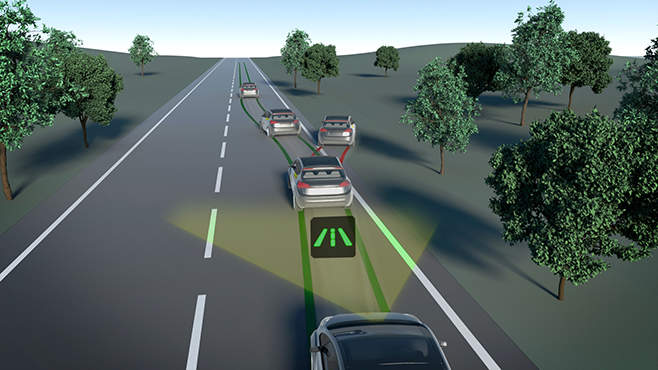With Brexit underway, the UK Government has started consultation on allowing autonomous driving – self-driving – modes up to 70mph, with the potential for legislation as early as spring 2021, bringing UK law and standards in line with UNECE targets.
The consultation period will run until October 27 2020, with industry bodies providing expert feedback as well as comments from the public, but it’s worth noting that this is just the first stage towards autonomous – self-driving – cars on British roads. The consultation is specifically focused on ALKS (Automated Lane Keeping Systems) and operation on motorways, where pedestrians, cyclists and animals shouldn’t be a consideration.
What does this actually mean?
Rather than the time-limited, hands on the wheel systems you can get currently from premium marques such as Mercedes-Benz and Audi, you’ll be able to enjoy the same stress-free approach of autonomous driving as you do with traffic-jam systems at legal motorway speeds.
It’s highly likely that the legislation will proceed – supported by industry bodies such as the AA, who welcome any new safety system – but for it to do so several previous laws must change. These address the issues of insurance and liability in an autonomous car, and received Royal Assent in the Automated and Electric Vehicles Act 2018. In essence, should an accident happen that is caused by self-driving car, the occupants (including the driver) are covered; an often-overlooked element of car insurance is the cost of fixing humans, rather than metal.
AEVA’s Five Laws of Robotic Cars
Okay, it’s not quite Asimov. But to be defined as autonomous the car has to:
1: Comply with relevant road traffic rules
2: Avoid collisions which a competent and careful driver could avoid
3: Treat other road users with reasonable consideration
4: Avoid putting itself in a position where it would be the cause of a collision
5: Recognise when it is operating outside of its operational domain

The fifth law is particularly relevant; ALKS cannot operate outside of motorway conditions. But there are other considerations, such as reading signs at gantry height for speed limits (and how many times has your limit-detecting car picked up on the roundels on a lorry or caravan?) and dealing with vehicles such as HGVs that may obscure signs that overrule the road’s status or limits at the time.
What else has to change before ALKS is legal at 70mph?
Sections of the Highway Code and Road Traffic Act/Motorway Traffic Regulations are in contradiction when it comes to automated driving – in particular, the emergency response of autonomous systems with an unresponsive driver, where they will simply stop in the lane they’re in with the hazard lights on, and the requirement for a driver to be paying attention and not distracted at all times.
For the latter, the proposal is to make the ALKS ‘the driver’, and for the former, a time limit for a car to be stationary on the motorway will be determined, during which time the driver should intervene and override the ALKS before moving the car )or informing emergency services in the case of a malfunction).
Ultimately the goal of the resulting legislation is to ensure the systems are robust enough to be considered safe to a degree where the human driver can cease to be responsible for the vehicle. It’s a significant step towards self-driving cars, but at the same time, will manifest itself as ‘rather better motorway adaptive cruise control’ – for now.
Are we dumbing-down driving?
Autonomous vehicle technologies, of which automated lane keeping is the latest, will be life-changing, making our journeys safer and smoother than ever before and helping prevent some 47,000 serious accidents and save 3,900 lives over the next decade,’ said SMMT chief executive, Mike Hawes. ‘This advanced technology is ready for roll out in new models from as early as 2021, so today’s announcement is a welcome step in bringing the regulation up to speed so that the UK can be among the first to grasp the benefits of this road safety revolution’
These systems are optional and designed to take the tedium and stress out of day-to-day driving; they’re not a replacement for the driver or a sign that driving enjoyment is under threat. The reality of such systems – more advanced systems, even – is being demonstrated and proven around the world, but for now it could bee seen as welcome assistive system that should reduce frustration, never take another car’s actions personally, and adhere to the law faithfully on some of the least interesting (yet most vital) routes in the UK.
Source: https://www.carmagazine.co.uk
CUT COTS OF THE FLEET WITH OUR AUDIT PROGRAM
The audit is a key tool to know the overall status and provide the analysis, the assessment, the advice, the suggestions and the actions to take in order to cut costs and increase the efficiency and efficacy of the fleet. We propose the following fleet management audit.




